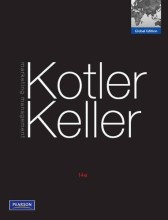Market segmentation and cluster analysis - Clustering algorithms - Hierarchical clustering models
7 important questions on Market segmentation and cluster analysis - Clustering algorithms - Hierarchical clustering models
What are divisive techniques?
What is single-link clustering?
What is complete-link clustering?
- Higher grades + faster learning
- Never study anything twice
- 100% sure, 100% understanding
What is average-link clustering?
What is a dendrogram?
How do you know if minimum variance is achieved?
- With R^2. R^2=(SStotal-SSerror)/SStotal.
- Total sum of squares measures how close every customer is to the overall means on all the variables used in the analysis.
- Error sum of squares is computed by comparing each individual customer to the means of only the other observations in the customer's cluster.
How does Ward's method work?
- Start with each of the N sample units and calculate SStotal. SSerror is the same as SStotal because there are no clusters yet.
- Begin forming clusters of size 2 and leave the other customers in their own cluster (N=1). Then have N-1 clusters.
- Do this until all options have been done.
- The pair that forms the smallest SSerror or the largest R^2 forms the first cluster.
- Then form N-2 clusters etc.
- Until all sample units are combined into a single large cluster of size N.
The question on the page originate from the summary of the following study material:
- A unique study and practice tool
- Never study anything twice again
- Get the grades you hope for
- 100% sure, 100% understanding
































